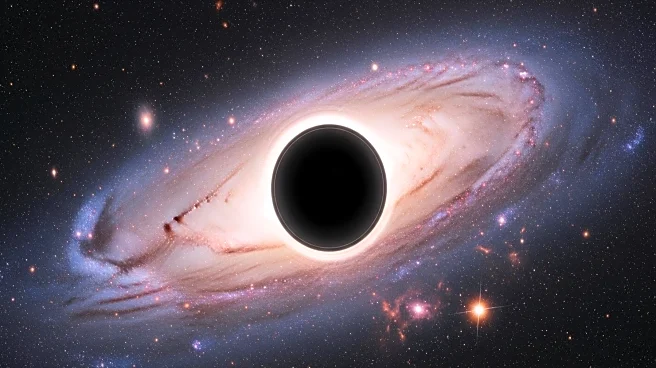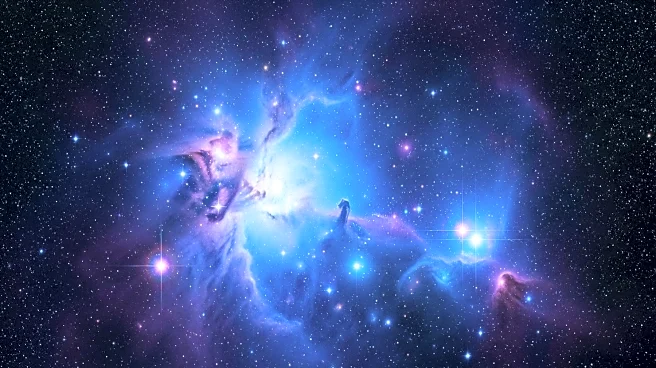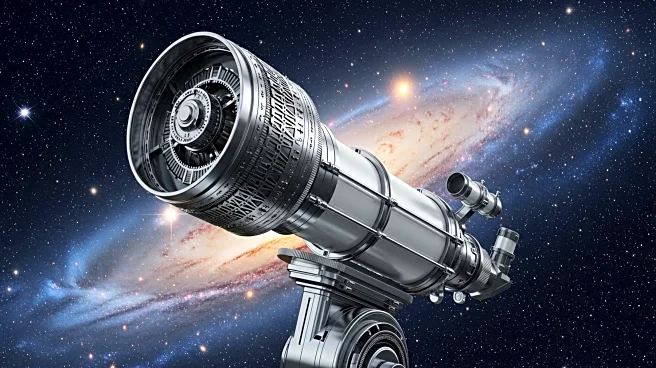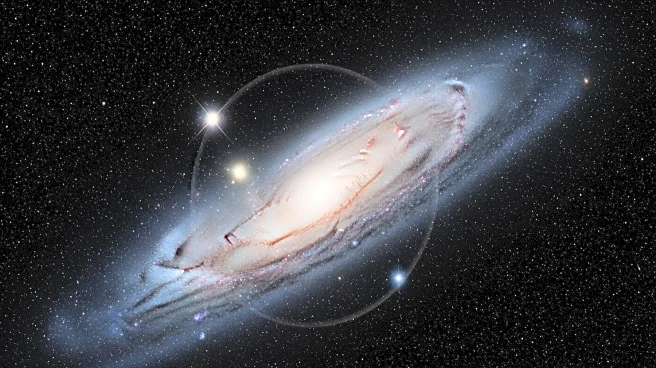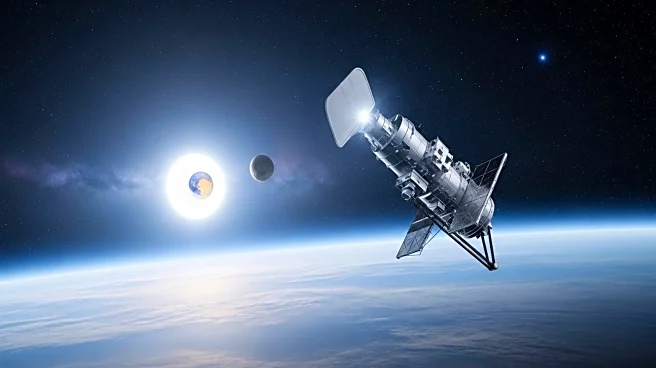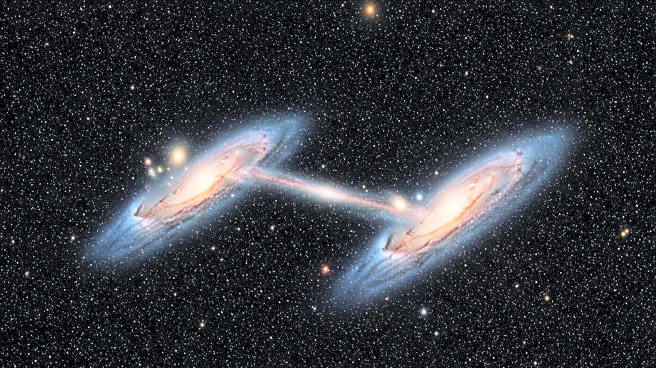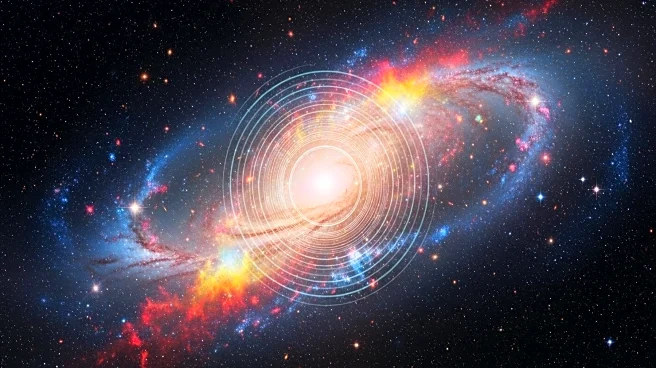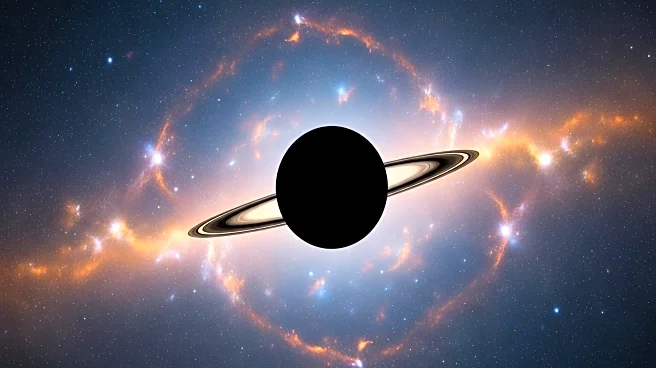What's Happening?
An international team of astronomers has successfully pinpointed the location of the brightest Fast Radio Burst (FRB) ever detected, named FRB 20250316A, within a nearby galaxy. Using the Canadian Hydrogen-Intensity Mapping Experiment (CHIME) and its Outrigger array, the team localized the burst to a spiral arm of the galaxy NGC 4141, located about 130 million light-years away. The FRB, nicknamed RBFLOAT, was detected on March 16, 2025, and lasted only one-fifth of a second. This discovery was made possible through very long baseline interferometry (VLBI), which allows for precise localization of such bursts. The event was further studied using the James Webb Space Telescope, which captured a faint infrared signal matching the FRB's location.
Why It's Important?
The ability to pinpoint the location of FRBs with such precision marks a significant advancement in astrophysics, potentially unlocking new insights into their origins and the extreme phenomena that cause them. FRBs are among the most powerful radio sources in the universe, yet their brief duration and mysterious nature have made them difficult to study. This discovery challenges existing theories about FRBs, particularly the notion that all FRBs repeat, suggesting that some may have explosive origins. The detailed observations could lead to a better understanding of the cosmic environments that produce these bursts, offering new tools to probe the universe.
What's Next?
The research team plans to continue studying FRB 20250316A and other similar bursts to further explore their origins and characteristics. The unprecedented spatial resolution achieved in this study opens the door to identifying the stellar environments that could give rise to such powerful bursts. Future observations and analyses may provide more clues about the nature of FRBs and their role in the universe. The findings could also influence the development of new technologies and methods for studying distant cosmic phenomena.
Beyond the Headlines
The discovery of FRB 20250316A highlights the potential for using FRBs as tools to explore the universe, rather than merely as cosmic curiosities. The detailed observations made possible by the CHIME/FRB Outrigger array and the James Webb Space Telescope could lead to new methodologies for studying the universe's most energetic events. This research may also inspire further technological advancements in radio astronomy and the study of cosmic phenomena.


